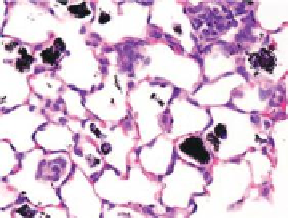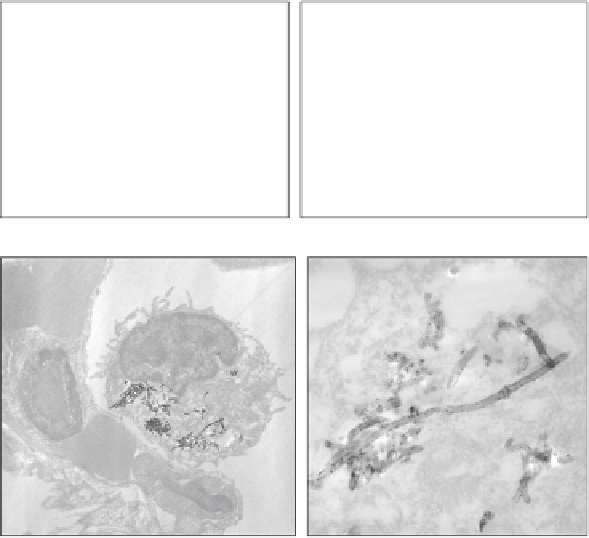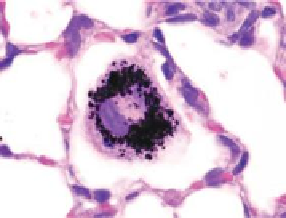Biomedical Engineering Reference
In-Depth Information
Al
50 µm
10 µm
Al
(a)
(b)
Al
100 nm
(c)
(d)
FIGURE 10.2
Light microscopic images and electron microscopic images showing uptake
of multiwalled carbon nanotubes (MWCNTs) by macrophages in the lungs of mice fol-
lowing inhalation exposure. (a) and (b) Hematoxylin and eosin-stained mouse lung section
6 weeks after inhalation exposure to MWCNTs showing fibroproliferative lesions (arrows)
and multinucleated giant cells (arrowheads). (c) and (d) TEM image showing MWCNTs
(arrows) engulfed by an alveolar macrophage. (Images in (c) and (d) reprinted from Bonner,
J.C.,
Proc. Am. Thorac. Soc
., 7, 138-141, 2013. With permission from American Thoracic
Societ y.)
improved dispersal of CNT agglomerates for IT or OPA delivery to the lungs of rats
and mice (Mercer et al. 2008).
10.3
ACUTE RESPONSES
10.3.1 m
aCroPhage
-m
ediated
u
Ptake
and
C
learanCe
Alveolar macrophages provide a primary immune defense against particles and
fibers that enter the lungs. Macrophage recognition to CNTs may depend on tube
width. For example, it has been reported that single-walled carbon nanotubes
(SWCNT) delivered to the lungs of mice are not taken up by macrophages unless
the SWCNTs are first treated with phosphatidylserine (Konduru et al. 2009). On
the other hand, other work has shown that SWCNTs are engulfed by alveolar mac-
rophages
in vivo
(Mangum et al. 2006). These seemingly conflicting reports could




















Search WWH ::

Custom Search